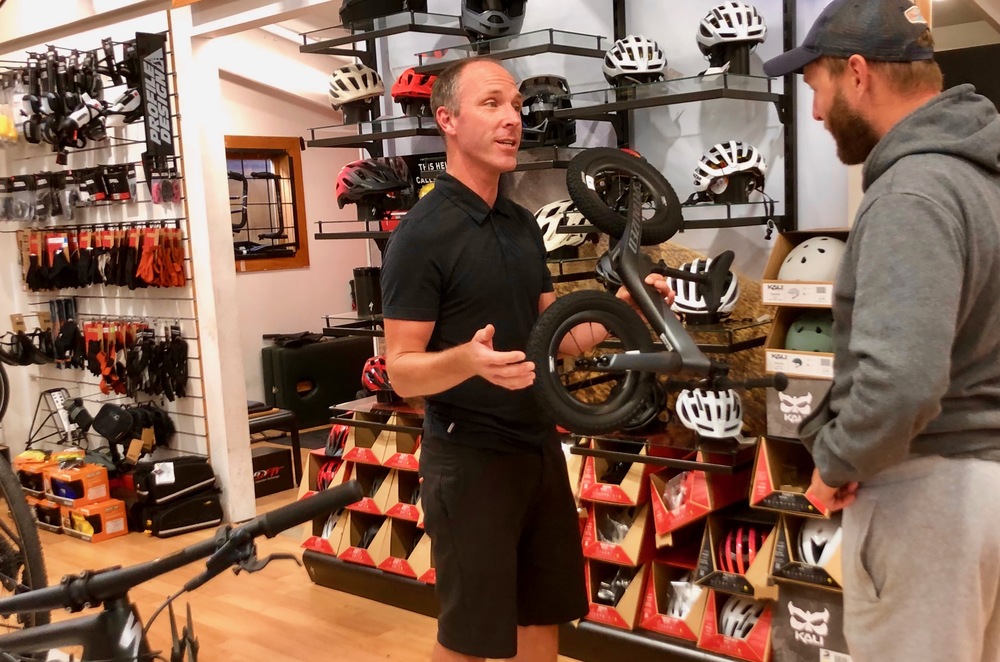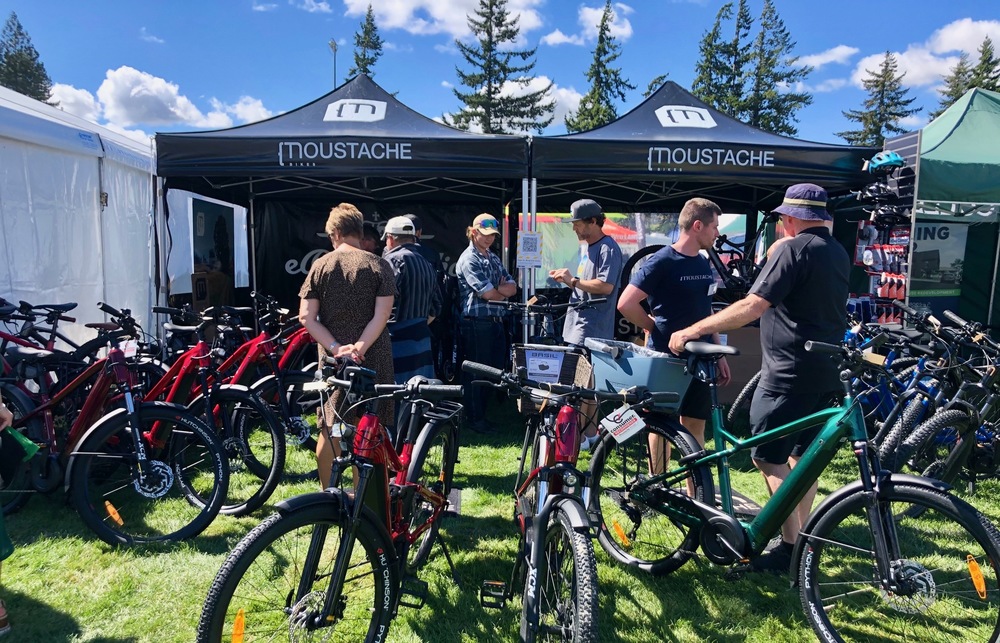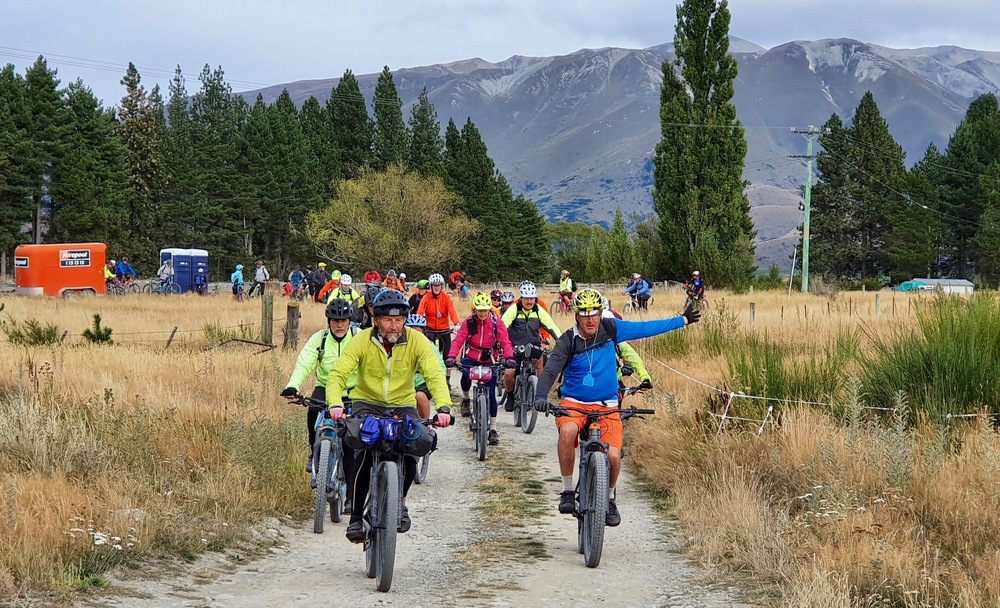Ebikes: ‘A golden time to be riding’
Diana Cocks
07 April 2021, 6:06 PM
 Ebikes are popular for a wide variety of reasons. PHOTO: Bicycle Junction
Ebikes are popular for a wide variety of reasons. PHOTO: Bicycle JunctionTrade Me recorded over 743,000 searches for bikes in just one week during March this year and, according to the New Zealand Transport Agency, cycling is now the fastest growing mode of transport in several cities and towns across the country.
Cycling Action Network (CAN), New Zealand’s national network of cycling advocate groups, says more bikes are imported to New Zealand than new cars and cycling continues to increase in popularity year on year with people buying bikes, sometimes more than one, for an increasing range of reasons - commuting, recreation, sport, work, fitness, leisure, adventure holidays and so on.
During that same week, Trade Me’s marketplace recorded 47,500 searches specifically for ebikes and a local bike retailer says that level of enquiry is consistent with the increased interest he’s witnessed in Wanaka in recent years.
Outdoor Sports’ bike store has been operating off Dunmore Street since 2009 and store manager Scott Rainsford, an experienced cyclist with more than 20 years of riding, racing and guiding bike trips all over the world, took the time to chat with Wanaka App about ebikes.
Purpose and popularity
Scott said Kiwis still tend to use bikes as “weekend recreation” rather than for primary transport but New Zealand has “a very strong cycle-sport culture” and the ebike is rapidly helping Kiwis to recognise this mode of transport to be more efficient for most journeys than the car.

Outdoor Sports’ Scott Rainsford talks bikes to a customer. PHOTO: Wanaka App
“Once you calculate time, cost, parking, [and] convenience for a trip under 10km (the majority of car trips) the ebike wins every time and it’s (subjectively) more fun,” Scott said.
He said the uncertainty of this last year has been a chance for many Kiwis to reassess their priorities and lifestyle and “I think people are increasingly wanting to invest in themselves”.
“Health, fitness, [and] time with family and friends have become prioritised and the more fun you can make an activity that brings together that combination the easier it will be to get anyone to try it - riding a bike is recognised as one of the great ways to do that,” Scott said.
Demographics
John Lieswyn, who works for Viastrada, a Christchurch transportation consultancy with expertise in walking and cycling, said the ease and speed of ebikes has helped to address the gender imbalance.
Statistically, ebike riders are fairly evenly split with around 40 per cent being female compared with regular bike riders, where the numbers drop to one quarter women compared with men, John said.

Ebike stallholders at the recent Wanaka Show attracted a lot of attention. PHOTO: Wanaka App
Ebike sales used to be primarily to older demographics as they are expensive, John said, “but increasingly (especially in hilly Wellington) people of all ages are buying them instead of spending so much on cars”.
Scott said over the past seven plus years, the ebike has opened up options so there is now a bike truly suited to everyone regardless of gender, interest, age or vocation.
“It really is a golden time to be riding,” he said.
Sales and service
While New Zealand has been slower than Europe to catch the ebike revolution, ebike sales are increasing significantly. Statistics NZ figures showed the number of new ebikes and escooters imported hit a record high of 65,000 in 2019, up by almost 20,000 on the previous year.
This means roughly one quarter of all bikes imported in 2019 were ebikes.
In terms of Outdoor Sports sales, Scott said the most popular bike is the all round trail bike which has front and rear suspension for easy-to-ride balance and rides confidently on varied surfaces and slopes.

Ebikes were used by almost half the riders who tackled the recent five-day Cavalcade bike-leg. PHOTO: Megan Page
“Popular in both acoustic and electric assisted formats, these bikes are most popular because they are comfortable, versatile and ...fun.”
Aside from a small handful of hand-made bikes, Scott said, all bikes sold in New Zealand are imported, which affects demand and price. Even the New Zealand designed bikes are mostly constructed from imported parts.
Generally the rise in popularity of ebikes has skewed the average price to be higher than previous years, he said, but noted “our highest individual sale last year was actually a super light road racing bike - no motor, no suspension, just pure bike design and technology.”
In 2020, bike manufacturing and shipping was affected by Covid-19 restrictions creating “the perfect storm” of already increasing demand far outstripping regular supplies, he said.
Imports of all bikes dropped last year and, Scott said, they had to be resourceful to meet demand. Depending on the model of the bike, wait times to fill orders varied from virtually no time to six months.
“We predict this year will still present its challenges but we feel in a better position to respond than the ‘seat of the pants’ operation that we were launched into post lockdown 12 months ago,” he said.
Future for ebikes and infrastructure
According to Statistics NZ more than 44,000 Kiwis use cycling as their main means of travel to work.
Scott said he’d like to see more people, particularly in Wanaka, use their bikes as a vehicle, especially for those quick trips into town, cafe, playground or a friend’s house.
CAN’s Patrick Morgan says the boom in cycling shows no sign of fading: people love the joy and convenience of riding a bike.
“But our councils need to pick up the pace on building bike lanes and paths to keep up with demand,” he said.
“Bike lanes are the best bang for buck in transport investments.”
“They future-proof our cities as we transition to low-carbon transport. They unlock more choices so people can leave the car at home for short local journeys. In cities, two out of three car trips are less than six kilometres, a distance you can cover by bike in 20 minutes.”
Meanwhile, central government is spending millions building cycle trails all over the country, including $13.2M to extend the Central Otago-Queenstown Lakes’ trail network by 122 kms.
Front and back country trails will always be a source of inspiration and aspiration for outdoor loving kiwis, Scott said
“My great hope is this increasing awareness and advances in sustainable trail building techniques will help the biking communities to join forces with the park and conservation departments and create wonderful new ways to see the wilderness...,” he said.





